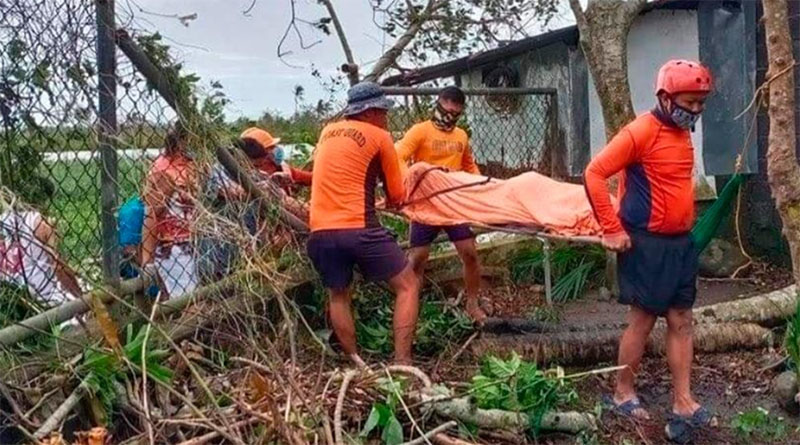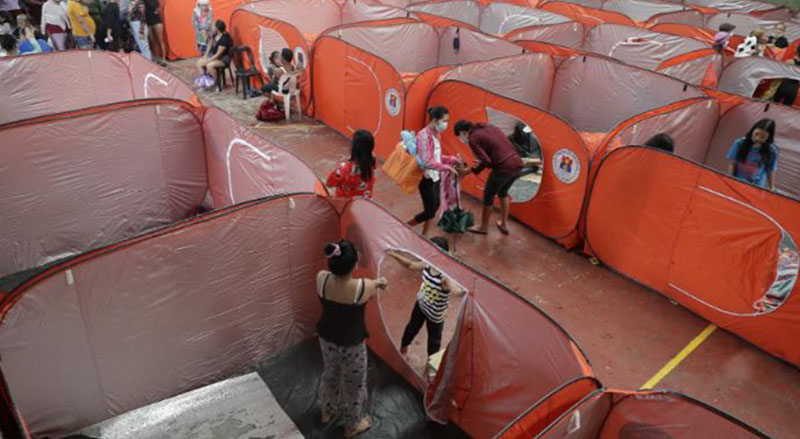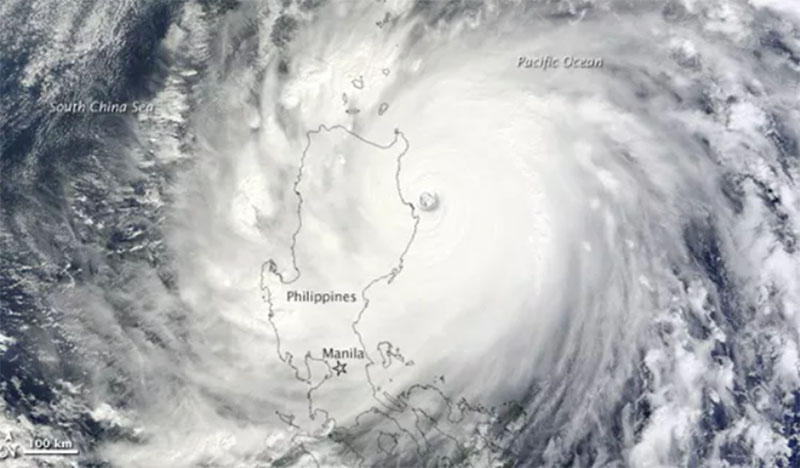In October, three tropical storms brought devastating consequences for the people of the Philippines. In early November, a super typhoon called Goni reached the islands carrying winds with sustained speeds of up to 225 km/h (140 mph), making it the strongest tropical storm to make landfall.

By the time Super Typhoon Goni made landfall, many people had been evacuated and placed in shelters and more than 150,000 preventive transfers had been made. This helped mitigate the number of human losses that correspond to 13 missing and 20 dead as of November 4. However, more than 1 million people were affected by the typhoon as in some places 90% of the structures were totally flooded. Elsewhere, power was lost as several utility lines were damaged by falling trees. One of the most affected areas corresponds to the main island of Luzon.

The catastrophe was compounded by the critical situation of the Philippines due to the pandemic produced by COVID - 19. The Philippines is one of the most affected countries in the Asian region as it has approximately 45,000 active virus cases. Given that the people who were in hospitals and in isolation had to be displaced to shelters, the government had to take additional measures to manage the risks posed by the natural disaster as well as the pandemic. One of these measures was the provision of protective tents with different colors in order to separate the sick people from the healthy or asymptomatic ones, reducing in this way the rates of contagion.

What is the difference between a typhoon, a hurricane and a super typhoon?
Meteorologically typhoons and hurricanes are the same as they are both tropical storms. The difference is the place of origin, as in the Pacific region these storms are known as typhoons and in the Atlantic region as hurricanes. The phenomenon begins as a storm that surpasses warm water from the ocean surface at 27 degrees Celsius (80 Fahrenheit) at a depth of up to 45 meters (150 feet). These storms suck up the water from the ocean's surface that evaporates into the air. As the water vapor rises, it condenses to form drops that will be released with much more energy in the future. In the meantime, the low pressure found below the rising air masses generates the air currents responsible for the displacement of the storm.

Typically, these tropical storms are referred to as a hurricane or typhoon when the recorded winds exceed a speed of 74 miles per hour. A clear example of a super typhoon is Goni in the Philippines in which the maximum sustained recorded winds were around 140 miles per hour, almost twice the winds produced by a normal hurricane.
Tropical storms rotate in different orientations depending on their location. Thus, those storms that form below the equator, as in the Philippines, rotate counterclockwise and are called typhoons, unlike the storms generated in the area of the Caribbean Sea above the equator, which are called hurricanes. In Central America and North America, hurricanes are classified based on the Saffir-Simpson scale, which is a scale based on the sustained wind speed of the hurricanes. Typhoons are also classified according to this indicator, with super typhoons being equivalent to the category 4 and 5 hurricanes of the Saffir-Simpson scale.
References
https://www.bbc.com/news/world-asia-54759868
https://edition.cnn.com/2020/11/01/asia/philippines-super-typhoon-goni-landfall-intl-hnk/index.html
https://www.trtworld.com/asia/deadly-typhoon-goni-damages-thousands-of-homes-in-philippines-41107
https://www.wired.com/story/what-is-a-super-typhoon-and-why-are-they-so-dangerous/
https://www.livescience.com/32830-typhoon-megi-philippines-category-5-101018.html
Related content:
What's the Difference Between a Typhoon and a Hurricane?It's one of, if not, the strongest storm ever recorded on the planet. Super Typhoon Haiyan slammed into the Philippines with winds touching 235 miles per hour. Trace looks at how this typhoon differs from hurricanes and what ingredients combined to create such a monster. |

